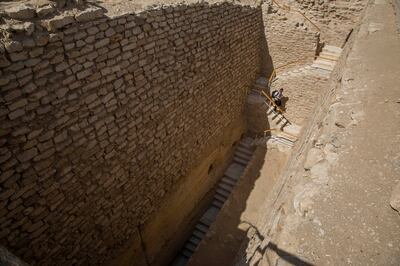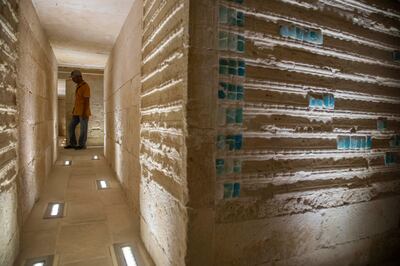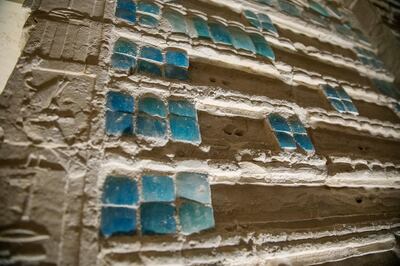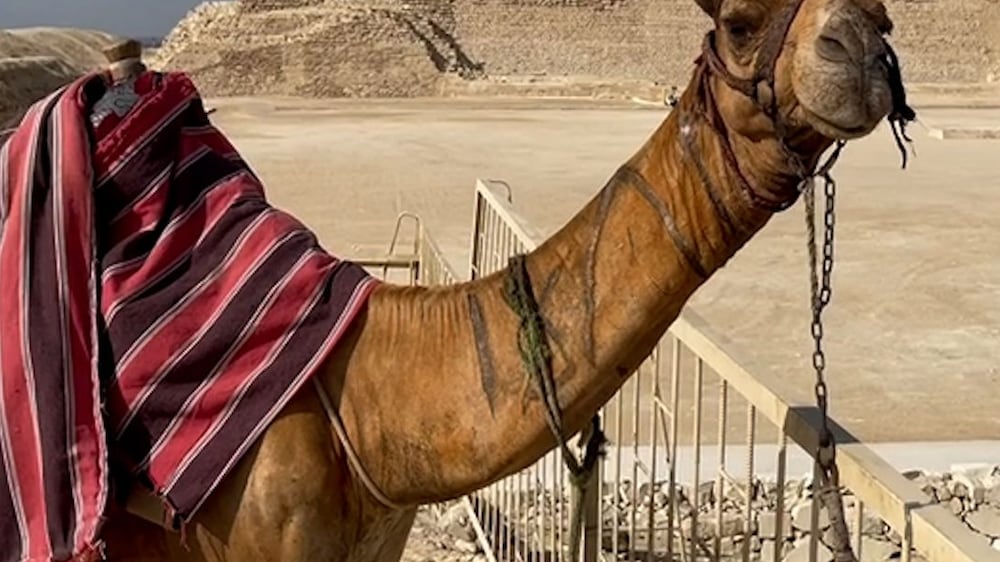The 4,700 year old southern tomb of King Djoser reopened to the public on Tuesday after a 15-year restoration, Egypt’s Tourism Ministry said.
A group of tourists visiting the Giza plateau were invited to an impromptu tour of the south tomb on Monday led by the Tourism and Antiquities Minister, Khaled El Anany.
The Djoser complex is home to the oldest known pyramid in the world, the Step Pyramid of Djoser, which was opened to visitors last year after being closed for restoration in 2006.
The south tomb of the complex is made up of two parts, a rectangular limestone block or "mastaba" on the surface and a labyrinth of passages leading to a tomb on the subterranean level.
The tourism ministry said on Monday that renovations to the south tomb consisted of extensive repairs to the floors of the tomb to make them safe for visitors to walk on, as well as significant changes to the stone staircase leading to the subterranean portions of the tomb.
Additionally, a new staircase leading into the tomb has been installed to reduce footfall on the ancient stairway, which had been damaged over the years.

A Unesco world heritage site, the funerary complex is historically significant as the earliest known example of the ancient Egyptian custom of pharaohs being buried in pyramid-shaped tombs.
The Step Pyramid is believed to have been built by Imhotep, a notable ancient Egyptian architect who was Pharaoh Djoser’s vizier – a high-ranking political adviser.
The underground portion of the south tomb is located about 30 metres below the surface entrance and consists of labyrinthine passageways that open on to a pink granite burial chamber.

The granite of the burial chamber was also restored to fix cracks in the structure, the tourism ministry said.
On account of the tomb’s old age, historians are in disagreement over what the burial chamber was used for.
The prevailing theory, however, is that it housed canopic jars containing the king’s organs, a burial custom that would become ubiquitous in ancient Egypt.
Past the burial chamber to the east are the south tomb’s galleries, which are decorated with blue faience tiles. The tiles were secured in place after several had come loose over the centuries.

The design of the tomb and galleries are an imitation of the chambers beneath the Step Pyramid, which is believed to be the final resting place of Djoser. The south tomb is located about 20 metres from the Step Pyramid.
The entire tomb has also been fitted with a new lighting system, said the ministry.







